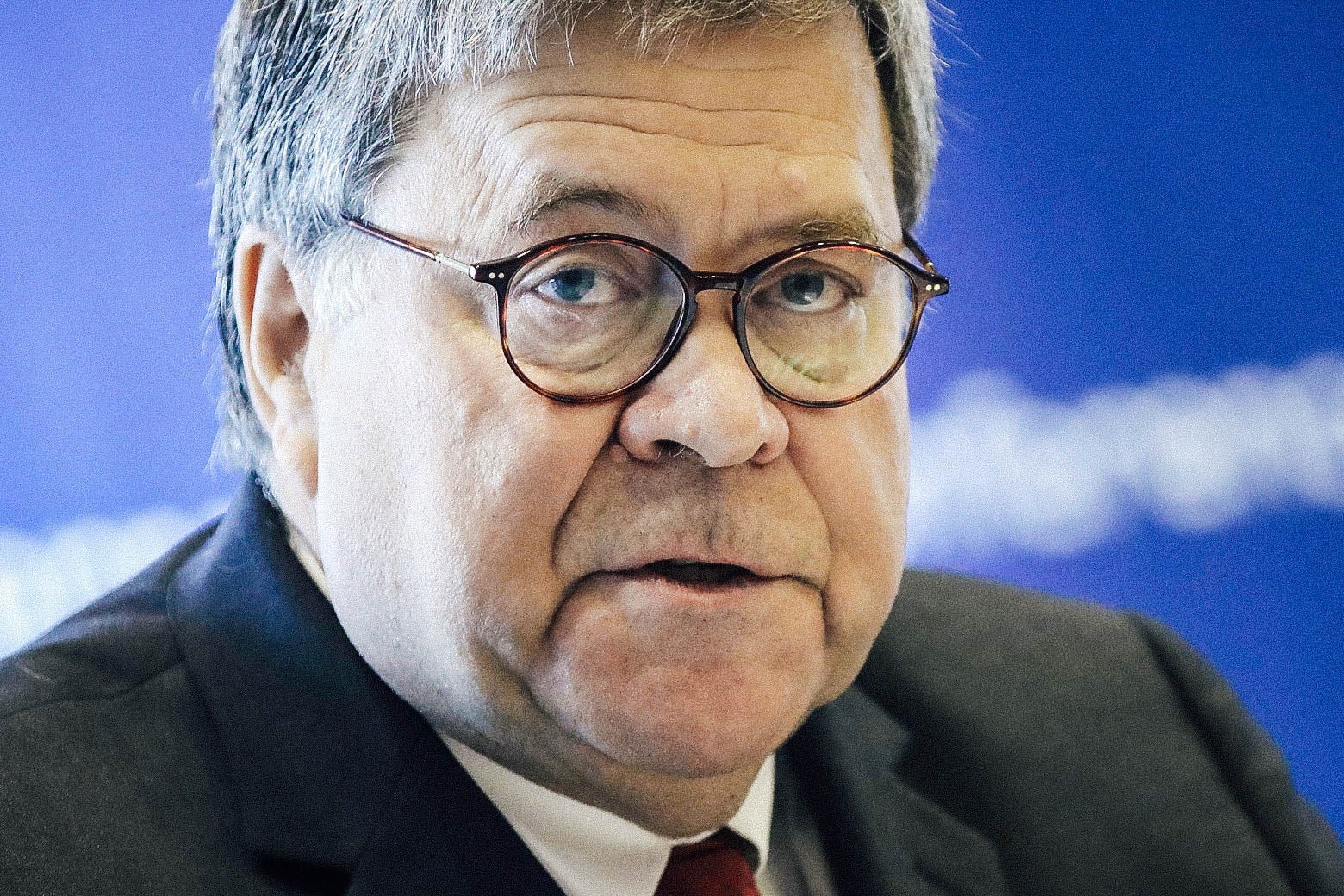Attorney General William Barr claimed that it was the rule of law that inspired the Trump administration’s decision to resume federal executions after 16 years. His plan calls for executions of five death row inmates in rapid succession starting in December using a controversial, single-drug protocol.
“Under Administrations of both parties, the Department of Justice has sought the death penalty against the worst criminals … each of whom was convicted by a jury of his peers after a full and fair proceeding,” he said in a statement announcing the decision Thursday. “The Justice Department upholds the rule of law—and we owe it to the victims and their families to carry forward the sentence imposed by our justice system.”
Given the administration’s generally cavalier attitude toward the “rule of law,” it is more likely that this decision was the result of a raw political calculus rather than anything that the law requires.
As the Chicago Tribune noted in its coverage of Barr’s announcement, “The move is likely to stir up fresh interest in an issue that has largely lain dormant in recent years, adding a new front to the culture battles that President Donald Trump already is waging on matters such as abortion and immigration in the lead-up to the 2020 elections.”
The resumption of federal executions is a logical outgrowth of President Donald Trump’s enthusiasm for capital punishment. As a private citizen in 1989, he took out advertisements calling for the death penalty for five young men accused in the infamous Central Park Jogger case.
More recently, in late 2015, in the run-up to his presidential campaign, he reacted to the shooting deaths of two police officers in Mississippi by saying, “We have people who are, these two, animals who shot the cops … the death penalty, it should be brought back and it should be brought back strong.”
In March of last year, the president called for enacting the death penalty for drug dealers and proudly said that he had gotten this idea from Chinese President Xi Jinping.
That the president is using the death penalty to play to his base is also suggested by the sharp partisan divide in support for that punishment and the fact that 80 percent of self-identified Republicans support it.
Yet whatever the motives of Trump or Barr, today’s political climate is far less hospitable to red-meat appeals to restore and expand the death penalty than it has been in the past.
The United States has come a long way from the time when Democratic candidates for president showed that they would be tough on crime by trumpeting their support for the death penalty, or leaving the campaign trail, as Bill Clinton once did, to preside over an execution.
Yesterday, almost every major contender for the Democratic nomination for president denounced Barr’s decision and reminded voters of their opposition to the death penalty.
Sen. Kamala Harris, for example, tweeted, “Let me be clear: capital punishment is immoral and deeply flawed. Too many innocent people have been put to death. We need a national moratorium on the death penalty, not a resurrection.”
Moreover, the resumption of executions at the federal level is unlikely to slow or reverse the momentum opponents of the death penalty have achieved in bringing about a national reconsideration of the death penalty. Signs of that reconsideration are everywhere.
Since 2007, seven states have abolished capital punishment by legislative action, and three by judicial decree. (Nebraska abolished it legislatively, but voters subsequently reinstated it in a referendum.) Four other states have a moratorium in place preventing anyone from being executed.
This period has been one of the most successful in the modern history of death penalty abolitionism.
Another mark of this success is that death sentences nationwide have fallen from a modern high of 315 in 1996 to 42 last year.
Executions have followed a similar path, going from 98 in 1999 to 25 in 2018.
Abolitionists have changed their arguments in ways that can and do appeal to a broader range of citizens. In many states, they have allied themselves with the plight of the families of murder victims. They also effectively countered “soft on crime” accusations with data showing that the death penalty does not make citizens safer. And the argument that capital punishment is far more expensive than a life sentence has won over major conservative groups and Republican lawmakers.
Most importantly, abolitionists have highlighted the many flaws in the capital punishment system: the large numbers of innocent people who have been sent to death row, the racial discrimination in death sentencing, and the growing prevalence of botched executions as drug manufacturers refuse to provide lethal drugs.
The federal death penalty is plagued by these same issues. A study of federal death penalty prosecutions released in 2000 by the United States Department of Justice (the most recent data available) found “that the federal death penalty, like its application in the states, is used disproportionately against people of color.” It also showed that in the five-year period from 1995–2000, “80% of all the federal capital cases recommended by U.S. Attorneys to the Attorney General seeking the death penalty involved people of color.” Today, 42 percent of federal death row inmates are black.
Another study conducted in 2014 in anticipation of the federal prosecution of Dzhokhar Tsarnaev, the Boston Marathon bomber, showed that federal death penalty prosecutions “are more expensive and time consuming, more subject to prolonged delays, and unlikely to produce a different result than where the prosecution seeks life without parole.” It also raised concerns about the “inevitability of error” in federal death penalty cases.
The resumption of federal executions does nothing to repair those troubling problems. Instead, it will provide another arena in which the death penalty’s irredeemable defects will be vividly on display.
